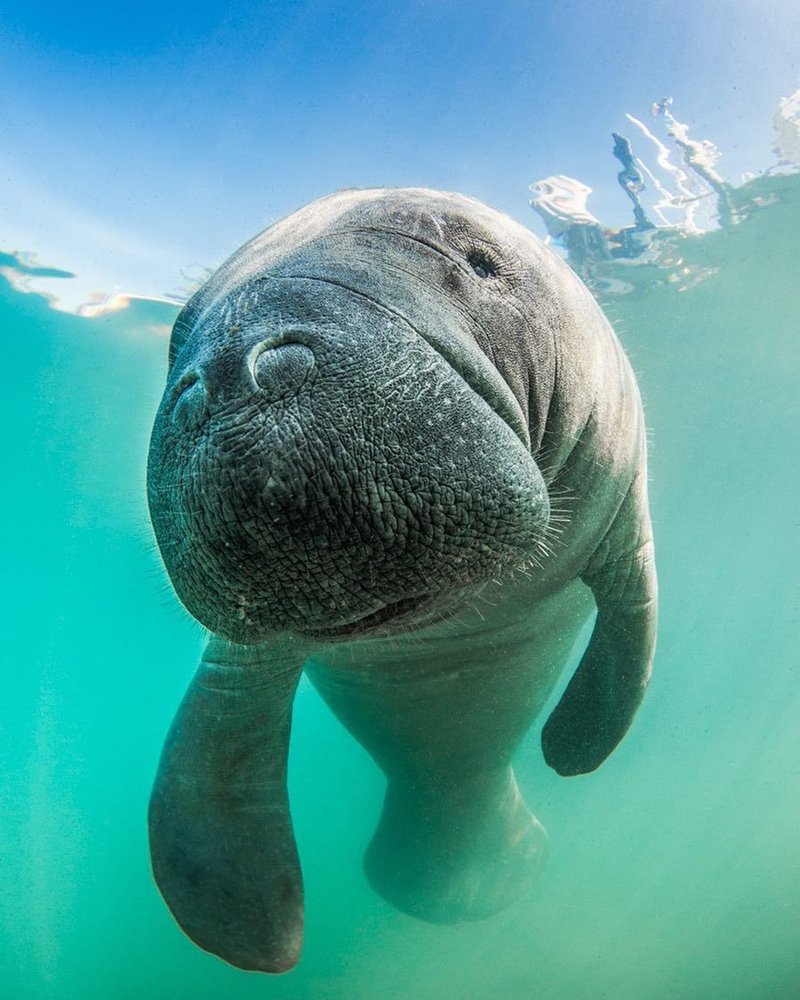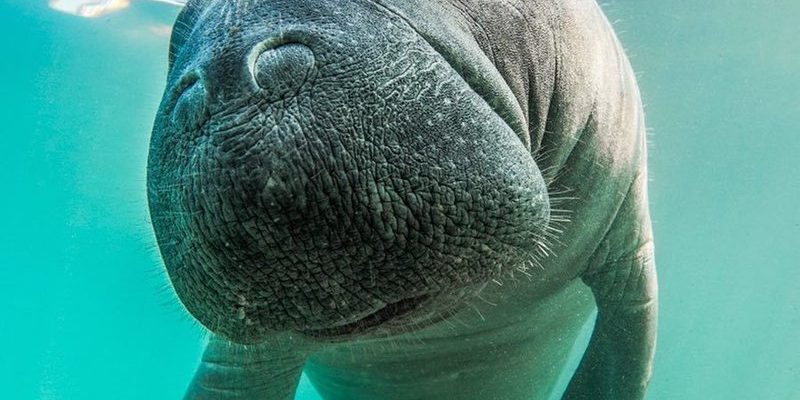
Manatees are *marine mammals* that love warm waters. They can be found in various habitats, including oceans, freshwater rivers, and coastal areas. Think of manatees as the ultimate social butterflies of the water world. They move between different environments, but there’s a bit of a seasonal twist to their travels. So, grab your favorite beverage, and let’s dive into the watery homes of manatees!
Manatee Habitats: A Quick Overview
First off, it helps to understand what kind of places manatees love. These mammals thrive in warm waters, generally between 68°F to 77°F (20°C to 25°C). They love shallow coastal areas, rivers, and lakes, where they can graze on their favorite snacks—seagrasses and other aquatic vegetation. Imagine them as the big, friendly lawnmowers of the water!
You can find manatees in a few key locations across the globe. They prefer regions like the Caribbean Sea, the Gulf of Mexico, and parts of the Southeast United States. States like Florida are particularly famous for their manatee populations. It’s not uncommon to see them in places like the Crystal River or the warm waters near the Florida Keys.
Oceans: The Manatee’s Playground
When we talk about oceans, manatees mostly hang out in the warm, shallow areas along coastlines. They’re not the deep-sea aficionados you might expect. Instead, picture them frolicking near the surface. These waters are rich in seagrass, which is their primary food source.
Manatees aren’t very fast swimmers, moving at about 3 to 5 miles per hour. This leisurely pace helps them munch on vegetation without a care in the world! In the ocean, they often stick close to areas like:
- Coastal bays
- Estuaries
- Mangrove swamps
Each of these spots offers a buffet of seagrass and other tasty treats. They also provide shelter from predators and a cozy place to hang out with fellow manatees.
Seasonal Movements in Coastal Areas
You might be curious about where manatees go when the weather gets chilly. They’re like those snowbirds who flock south for the warmer climate. When water temperatures drop, manatees migrate to warmer coastal areas or freshwater springs. In Florida, for example, they often travel to places like Blue Spring State Park, which has a consistent warm water flow.
This seasonal migration is crucial for their survival. Without these warm water retreats, manatees can suffer from cold stress, which can be dangerous or even fatal.
Rivers: Freshwater Retreats
Moving on to rivers, manatees have a soft spot for these habitats too. They’re often found in large rivers and their tributaries, especially in places with slow-moving waters. Freshwater areas are like nature’s buffet, offering plenty of tasty aquatic plants.
In the Southeastern U.S., manatees are common in rivers such as the St. Johns River and the Withlacoochee River. During warmer months, they might travel further upstream in search of food. You might even spot manatees in freshwater lakes, particularly those that are near coastal regions.
Benefits of Freshwater Habitats
Living in rivers allows manatees to enjoy clear waters where they can easily find food. Moreover, these habitats often offer a refuge from marine predators. The combination of plants and warm water creates a perfect environment for young manatees to grow and thrive.
Manatees sometimes venture into rivers where they can be seen munching on soft water plants. Imagine watching them lazily bobbing up and down, taking in the sunshine while they enjoy their meal. It’s a reminder of how much beauty exists in these watery worlds.
Conservation Areas: Safe Havens for Manatees
Many manatees call conservation areas their home, where they can swim freely and safely. These protected regions have been established to help safeguard the species from threats like boat traffic, habitat loss, and pollution.
In the U.S., many marine sanctuaries and parks serve as critical habitats for manatees. For example, the Crystal River National Wildlife Refuge is one of the best-known places to see manatees. It’s specifically designed to protect these gentle giants while allowing visitors to appreciate them in their natural habitat.
Importance of Conservation Efforts
Conservation efforts play a significant role in ensuring manatees can continue to thrive. These initiatives often focus on:
- Habitat preservation
- Reducing boat traffic in critical areas
- Education and awareness to mitigate human impact
By creating safe havens, we can help maintain healthy manatee populations and ensure future generations can enjoy the sight of these amazing creatures.
Threats to Manatee Populations
Sadly, manatees face several threats that can affect their habitats and overall survival. The biggest culprits include habitat destruction, water pollution, and boat collisions. Every year, numerous manatees are injured or killed because of careless boating practices.
Water pollution also plays a significant role. It can impact the quality of the seagrass they eat and affect their health. In areas where runoff occurs, toxic algae blooms can pose serious risks to manatee populations.
What Can You Do to Help?
You might be asking yourself how you could help protect these lovely creatures. Here are a few ways to make a positive impact:
- Respect manatee habitats by following speed limits in boating zones.
- Get involved with local conservation groups working to protect waterways.
- Spread awareness about the importance of manatees and their environments.
Every little bit helps! By being mindful of manatees and their habitats, we can contribute to their preservation.
So, where are manatees found? They grace our oceans, rivers, and conservation areas, each place offering them the warmth and food they need to thrive. Whether you’re imagining them wandering around the coastal bays of Florida or floating along a serene river, manatees are creatures worth celebrating.
Next time you think about these splendid creatures, remember the importance of their habitats and the efforts needed to protect them. Manatees may move slowly, but their impact on our ecosystems is anything but. Let’s do our part in keeping their stories alive, one gentle giant at a time!

